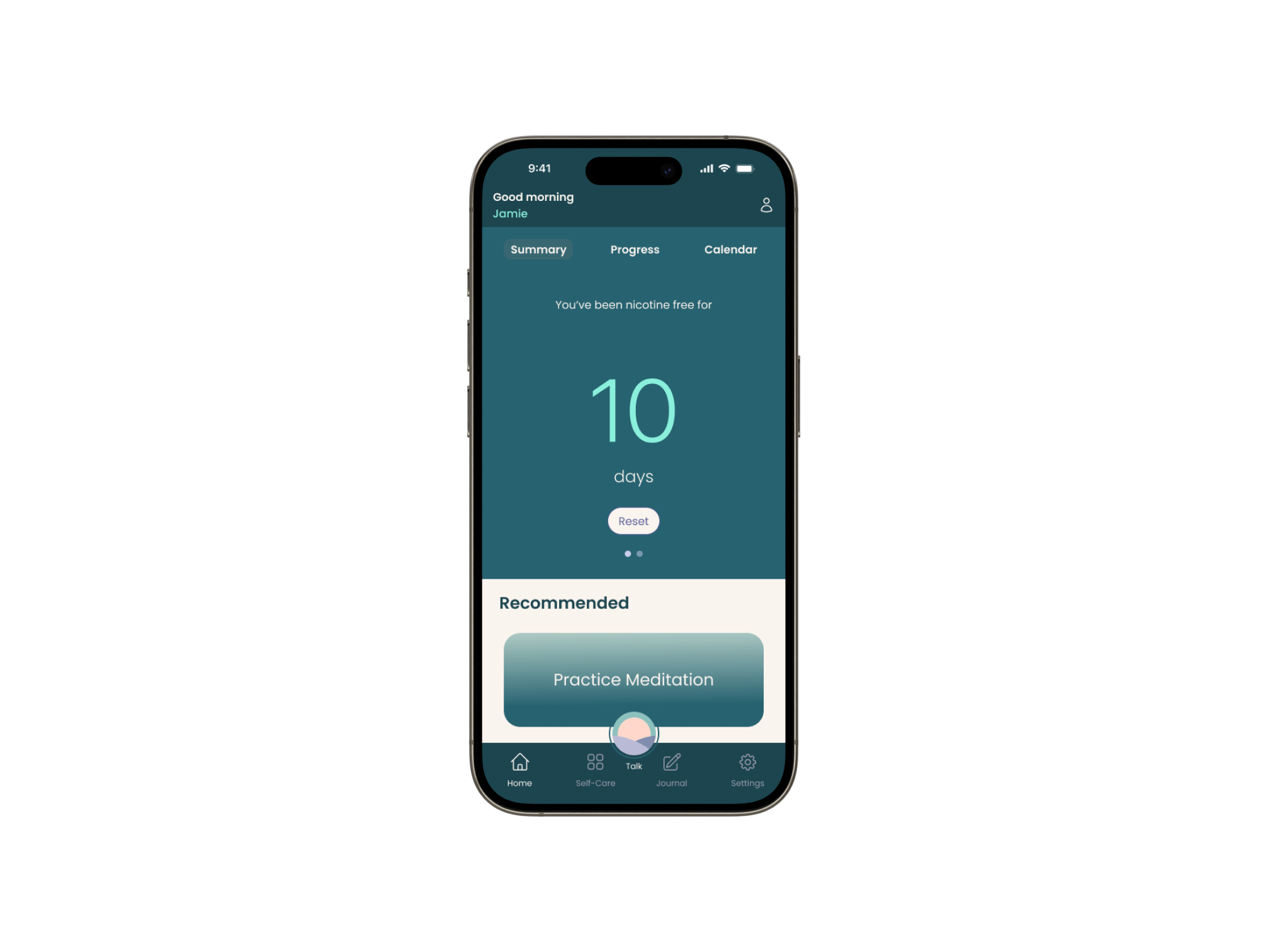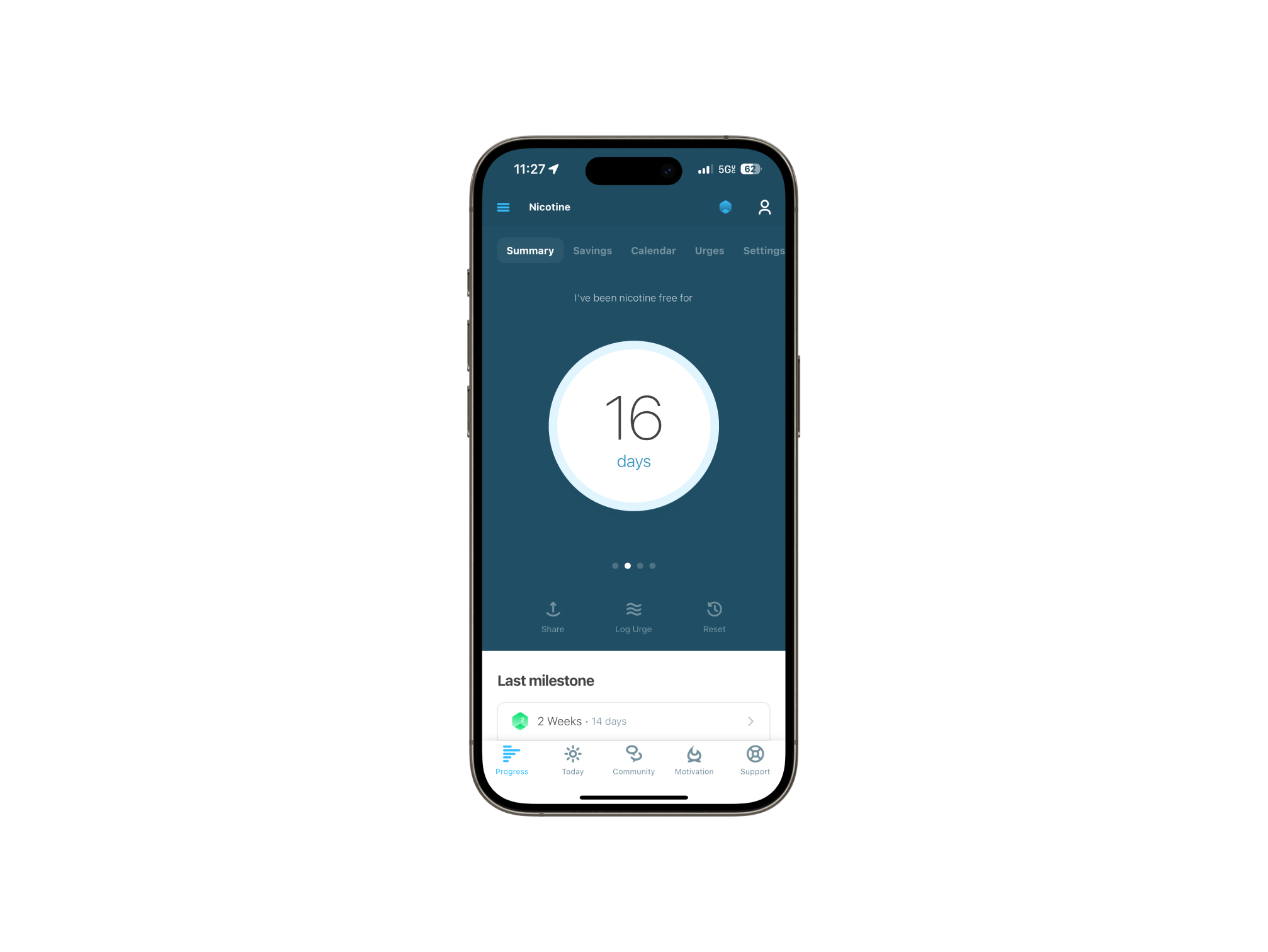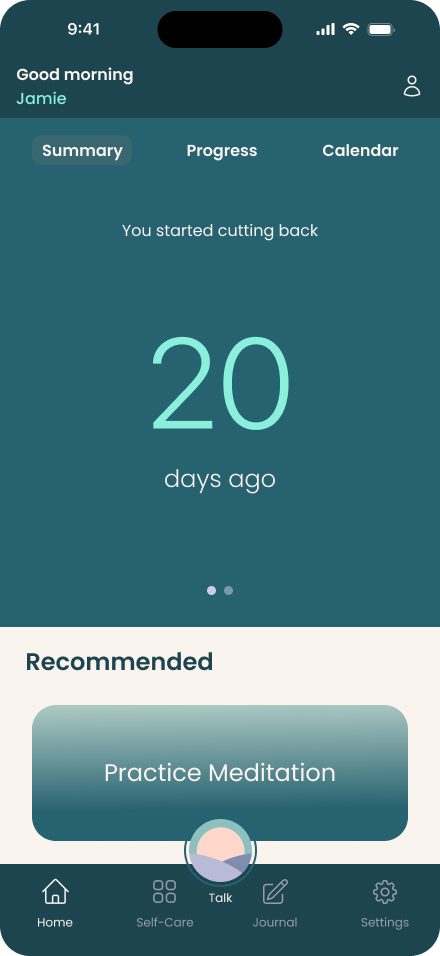Haven AI
Your Safe Space to Quit
Overview
Problem
Despite the growing number of apps aimed at helping users quit vaping, most rely heavily on passive features like streak tracking and behavior logs. These approaches often lack the proactive, personalized interventions needed to support long term success.
Solution
Haven AI looks to address these problems by creating a safe space where users can chat with an AI therapist that proactively checks in with users at high stress moments, and recommends distraction exercises.
Role
UX Researcher & UI Designer
Time Frame
6 Weeks
Team
2 Product Managers, Software Engineers (5)
When it Really Matters
Research
While conducting user interviews a common theme found, was that users felt most quitting apps weren’t there when it really mattered. The average app allowed users to track their streaks and log data, but couldn’t intervene when it mattered.
“In the difficult moment, you just want talk to someone, the sense of communication is what helps.”
“It would be so helpful to have an app that jumps in right when a craving hits.”
*Feedback from interviews
Sizing Up the Competition
Competitive Analysis
In order to better understand our competitors and gain design insights we conducted a competitor analysis. This process allowed us to evaluate existing solutions in the quit-vaping space and uncover opportunities for innovation that would differentiate our product in both usability and emotional impact.
Defining the Customer
User Persona
Using insights gained from both user interviews and topic research, I created a persona to represent the average Haven AI user.
Laying the Groundwork
Mid-Fidelity Design
After some sketching and brainstorming I turned my key ideas into a few wire frames and components. These helped get things sorted in order to insure a smooth future design process.
Refining Key Ideas
High-Fidelity Design
Moving forward I created high fidelity designs incorporating and expanding on ideas from the previous wireframes as well as fully fleshing out the colors and branding of Haven AI in order to create a cohesive user experience.
Challenging Design Assumptions
User Testing & Feedback
During user testing, while the overall feedback was largely positive, the sessions revealed several critical gaps in the design system that I had not initially accounted for. These insights highlighted inconsistencies in component behavior and areas where the interface did not fully support user needs, providing valuable opportunities to refine the system for greater usability and scalability.
Design Flaws
Initially I had been designing with a user trying to fully quit vaping in mind while neglecting users that wanted to cut back gradually.
Users were not given a clear and quick way to reset their streak in the app without having to engage in a full conversation with the chat bot.
Design Solutions
To remedy the lack of support for users wanting to cut back I designed new frames to closely track their gradual progression as time passes.
In order to give users a more accessible method to reset streaks I added a reset button on the home screen of the application.
High-Fidelity Design
The Final Design
After finalizing the design through multiple iterations, I created a high-fidelity prototype to clearly communicate user flows and interactions. I collaborated closely with developers during handoff, providing specifications and guidance to ensure smooth implementation and design consistency.
Outcome
End of the Road
After handoff, I collaborated closely with developers to ensure design intent was maintained and edge cases were addressed. While time constraints prevented a full launch during my internship, we delivered a fully developed prototype that demonstrated functionality and design vision to stakeholders.
What I learned
Time constraints and scope are a major factor when it comes to user research, making it essential to be prepared and ready to adapt when things don’t go to plan.
What I Would Do Differently
I would advocate for the importance of user research and testing as well as challenge my own assumptions as a designer. My own bias and confidence in a hypotheses led me to neglect a whole user base for a portion of this project. Proper planning and allocation of time could have easily prevented this.














